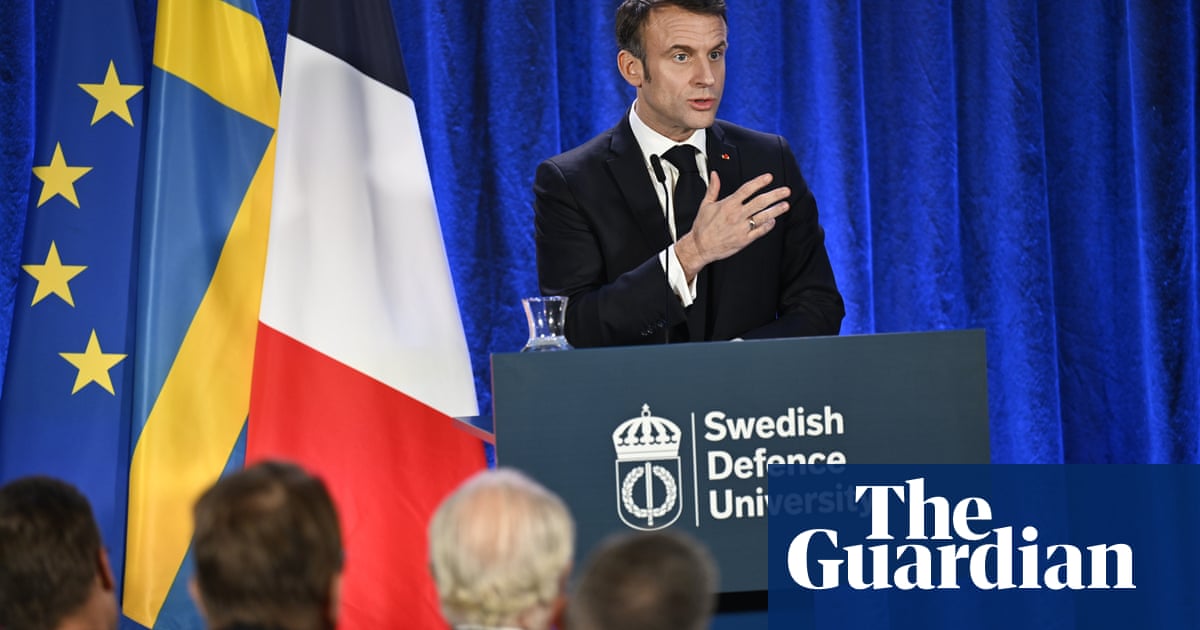
The just and necessary fight for Ukraine places recent disastrous wars of choice such as Iraq and Afghanistan into the squalid context they deserve. However, there are disturbing signs that western policymakers have not learned the most vital lesson of those conflicts – the necessity for clear objectives and an unambiguous strategy for success.
It may seem obvious, but it bears restating that this is a military campaign, and when it comes to military support the US is, if not the only player, by far the most significant. As matters stand the US has failed to articulate its war aims. We hear plenty about what the US “supports”, such as “Ukraine’s territorial integrity”. The US supports many things: human rights, democratic processes and so forth. These are not the same as its war aims. Nato’s aims in the Kosovo war of 1999, for example, were clear: Serbian forces out of Kosovo; a peacekeeping force and international civilian administration deployed; and a return of refugees. The objectives of the Gulf war of 1991 were even simpler: to expel Iraqi forces from Kuwait. It is worth remembering, and not coincidental, that these were the west’s last successful military campaigns.
It is well past time for the US (and therefore Nato and its allies) to articulate its objectives and conduct its support accordingly. Failing to do so risks an aimless, long – and indeed indeterminate – conflict with huge unnecessary loss of life.
So far we have had at least three very different articulations of broad US strategy for Ukraine. First, in March 2022 Joe Biden – perhaps in an unguarded moment that was quickly walked back – made a remark that Vladimir Putin “cannot remain in power”. Regime change, in other words. Shortly afterwards, in the most cogent statement on US policy we have heard so far, the US defence secretary, Lloyd Austin, declared: “We want to see Russia weakened to the degree that it can’t do the kind of things that it has done in invading Ukraine.” This could be summarised as “bleed them until it hurts and continue to bleed them”.
Finally, last month the secretary of state, Antony Blinken, clearly stated: “Our focus is on continuing to do what we’ve been doing, which is to make sure that Ukraine has in its hands what it needs to defend itself, what it needs to push back against the Russian aggression, to take back territory that’s been seized from it since February 24th.” We could summarise this as “give them enough to defend themselves and retake some land, but that will do them”. This does not include Crimea or indeed much of Donbas.
If we assume that Biden misspoke about regime change (not necessarily a correct assumption) we have at least two very different aims, implying very different outcomes. First, the “bleed Russia dry” approach is best approached by continuing the war as long as possible, engaging and degrading Russia’s armed forces as deeply and for as long as possible, while preferably maintaining combat at a manageable level of intensity. It amounts to using Ukraine’s forces as a proxy army. Dan Crenshaw, a Republican congressman, summarised this approach as “investing in the destruction of our adversary’s military, without losing a single American troop”.
In the second approach, described by Blinken, a very limited set of territorial objectives are declared. But they in no way accord with Ukraine’s stated and clear aim of recovering all its internationally recognised borders – including all of Luhansk, Donetsk and above all Crimea. In fact, at no point has a clear and unambiguous statement been made by the US that it is its policy to support military operations to recover Ukraine’s lost territories.
Until now the weaponry transferred to Ukraine has not included significant amounts of the kind of heavy equipment that will allow Ukraine to retake its land. The key capabilities here, as requested by Ukraine’s military command, are US-made tanks, armoured fighting vehicles and a step-change in the amount of artillery. We are talking here of hundreds, not tens. Earlier this month, the US announced the transfer of 50 Bradley armoured fighting vehicles. The Ukrainians asked for up to 700.
While the west’s support is generous and much appreciated, there is a harsh truth at the centre of it. What has been given was sufficient for the Ukrainians to challenge Russia’s ground forces – especially its formerly overwhelming artillery advantage – and to defend its airspace. But it is insufficient for Ukraine to conduct large-scale manoeuvre warfare to retake increasingly well-defended Russian-held provinces. The continued occupation of these provinces, by the way, constitutes Russia’s clear primary war aim.
The drip-feed of western military equipment points towards both Austin’s “bleeding Russia dry” and Blinken’s very limited objective of returning Ukraine to the lines of control of 24 February 2022. There is certainly no evidence that the US will support anything like the Ukrainian objective of regaining all of its invaded territories – an unambiguous victory. Indeed, there are indications that the US is decidedly reluctant for Ukraine to attempt to do so.
Setting well-defined goals would allow the US to calibrate its assistance with a set of clear plans and schedules. It would give Ukraine a degree of certainty as to what it can expect and enable it to plan its operations accordingly. If the Austin or indeed the Blinken aims represent true US policy, then it is essential that Ukraine understands this. The alternative is that Ukraine could find itself planning large-scale operations unsure as to whether it will receive the materiel necessary to complete them, and running a greatly increased risk of failure. This is the situation it is now in.
As in the misbegotten wars of the past two decades, the importance of clear war aims and strategy may not make itself apparent in the early days of a campaign. Rather it becomes obvious when matters go badly wrong. We cannot run the risk again, in a genuinely just cause, of failing to articulate our objectives clearly.
This article was amended on 10 January 2023. An earlier version said that the objective of the 1991 Gulf war was to expel Iraqi forces from Iraq when it should have said from Kuwait.
Frank Ledwidge is a barrister and former military officer who has served in the Balkans, Iraq and Afghanistan












